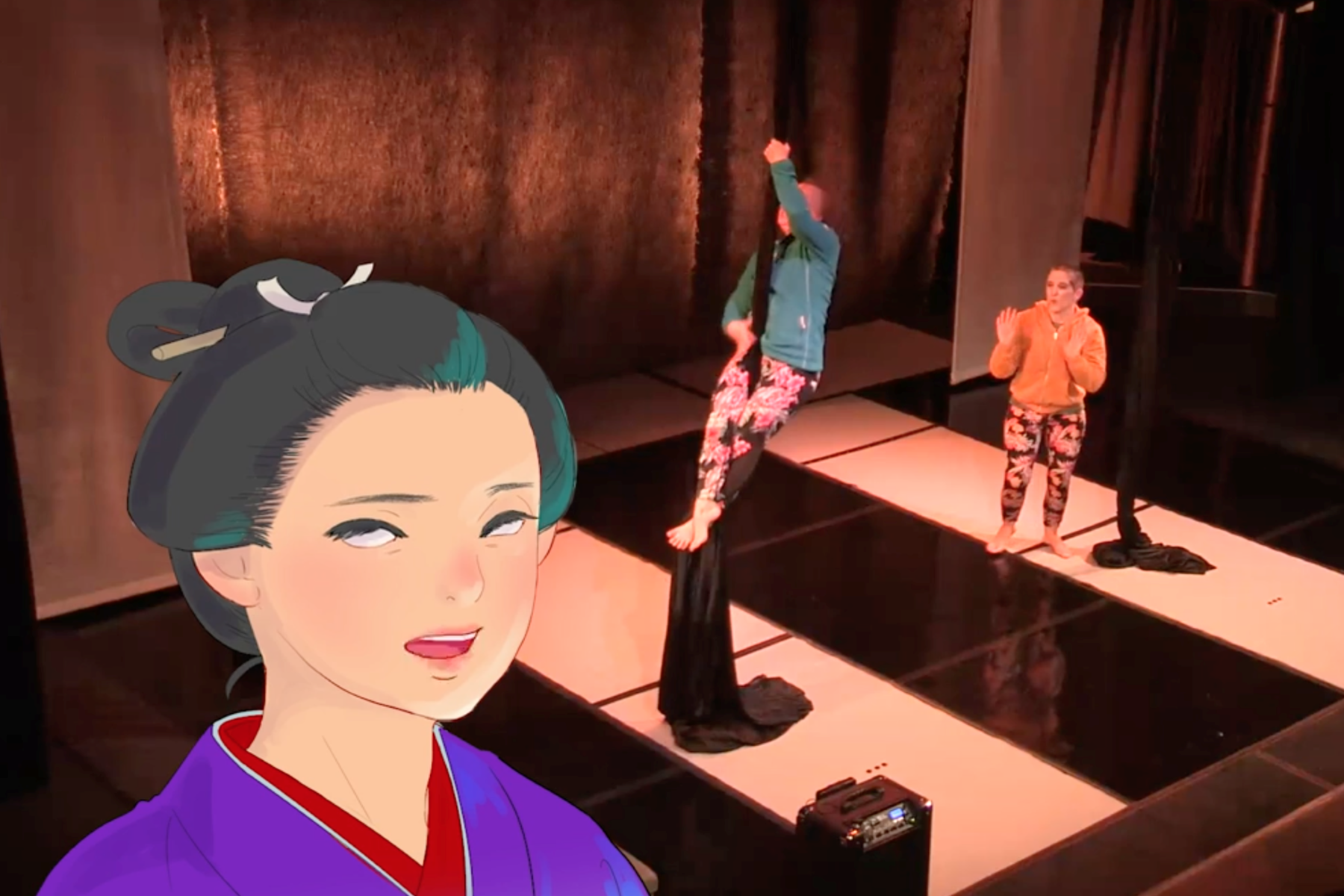
Extant's Digital Light Paths
What does digital access mean for arts organisations?
Many companies are making brilliant accessible work and universal content that people want to see. But, as Harmeet Chagger-Khan argues, we need a more consistent approach.
The landscape of the arts is changing around us physically. People are returning to venues, but they are also hungry to access art partly – if not entirely – in a digital way. Covid has changed the way we create work and collaborate. It has also sparked conversations about how audiences access digital content and the ways artists with disabilities create and access work.
Although these conversations have been around for 20 years or more, the raised awareness from the pandemic prompted the sector to realise the need to set access into the fabric of what culture is. If we are serious about making and showing accessible digital work and creating visibility for artists making the work, the consideration for access must be there from the start.
Shifting the conversations
Fortunately, awareness is changing. ACE’s Let's Create and Heritage Lottery Fund's Digital Attitudes and Skills for Heritage (DASH) with their long-term digital inclusion plans have shifted the focus. As a result, many more organisations are asking 'How easy is it to make our content more accessible?'
When organisations or artists apply to The Space for funding now, they often include accessibility costs in their budget line, which shows they are thinking about how to reach audiences and are planning to respond in a way that is accessible. We actively encourage those who haven’t set aside funding to consider how they might include it.
What does access mean?
It's easy to assume that your work is for everyone, but how do you make that work truly for everyone? An organisation creating digital content needs to consider how artists with access needs will be able to view and experience it.
The commissioning process must be inclusive and open so that it represents society as it is. By promoting as widely as possible and ensuring applicants can submit via audio and video, we are reaching those that wouldn’t normally apply.
When working in the digital sphere, incorporating access must become automatic behaviour. Only once it is automatic can those who don't normally access such content feel included.
A new set of guiding principles
Many organisations are looking to us for help with these considerations. At The Space, we are scoping a new area of work with arts practitioner and activist Zoe Partington looking at innovative digital content and audience access, by convening an action learning set of people in the sector.
We’ll be working with creative practitioners to learn what commissioners and funders want and find out what has been done already. There is a great deal: CRIPtic Arts’ Hybrid Events is excellent, as is Unlimited’s Demystifying Access. We are building on these to create a set of guiding principles to help organisations understand the minimum they should offer when programming digital work or curating and commissioning artists.
Zoe explains: “It’s important that cultural organisations shift up a gear, embed accessibility into their culture and have a starting point and strategy to do it. Thinking differently opens up cultural opportunities for everyone. Real change empowers us all and encourages inclusion. It’s not acceptable to make decisions ‘about us without us’.”
She continues: “Historically and currently disabled artists are excluded from our arts institutions as equals, often not represented at all. And, if we are, our experiences are dismissed by ablest management. The dialogue of ‘unique insights’ from another perspective, is something all cultural institutions gain from. By including disabled artists to make decisions in collaboration simply expands all our horizons, and the value is immense.”
Good stuff is happening, but in small pockets. CRIPtic Arts and Unlimited are leading the way, as are others such as Extant, a company of visually impaired artists and theatre practitioners. Their stunning multimedia production Digital Flight Paths which combines animation, aerial movement and creative audio description set a high bar with critical acclaim. And My Sound Cinema has just launched. Supported by Creative Informatics, Innovate UK, The Space and other organisations, the platform is the first online site for audio-described screenings of new and existing cinema releases.
Making accessibility the norm
Many companies are commissioning more diverse artists with access needs, making brilliant work and universal content that people want to see. We need a more consistent approach that can be rolled out and implemented with a network of organisations and accessibility providers, supporting organisations to achieve best practice standards that open up digital content to those who have previously been excluded.
But these things take time. If we assume a single problem and a single answer, we won't be providing anything of substance. That’s why we want to ensure we have as many voices as possible contributing to the conversation to understand fully why organisations aren't doing this.
Only then can we recommend a set of guiding principles and the providers and tools that can help. It's a very practical way of approaching it, but the way people will start doing these things is by understanding that it's easy.
The hope is that everybody will want to do this because it is the norm. When that happens, and when it happens in an interconnected way, it will give many more artists with access needs the opportunity to create and showcase work and have visibility. They will become a part of this rich tapestry of work that asks questions, represents multiple points of view and tells beautiful stories.
Harmeet Chagger-Khan is a Digital Producer at The Space.
![]() www.thespace.org
www.thespace.org
![]() @thespacearts | @LuciaAttica
@thespacearts | @LuciaAttica
This article, sponsored and contributed by The Space, is part of a series spotlighting new ways of creating and distributing digital content, and exploring the wealth of new technologies and platforms coming online.
Join the Discussion
You must be logged in to post a comment.